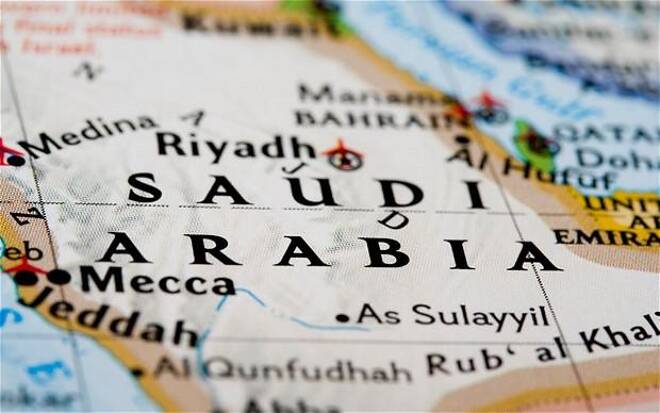Advertisement
Advertisement
Saudi Arabia Keeps Pressure On US Producers
By:
Asian traders bought up the cheaper commodity in the morning session giving crude oil a small bump adding 33 cents and are currently trading at 45.35. At
A rise in the dollar, fears that oil production of the Organization of Petroleum Exporting Countries will not slow and reduced political tensions in the Middle East from US-Russia talks on Syria also weighed on oil.
Baker Hughes’ report on the weekly US oil rig count showed a drop of eight rigs last week. It was the third weekly decline of the rig count, a sign that a renewed fall in crude prices since July may be slowing some drillers from returning to the well pad in a bigger way. US crude futures, already down 3 percent before the Baker Hughes report, pared losses just briefly on the news.
There are a couple of tidbits out over the weekend about Saudi Arabia. First up, its reserves continue to shrink. The IMF projects that Saudi Arabia’s budget deficit will exceed $107 billion this year as lower oil revenues hurt the economy.
Oil generally accounts for 90% of government revenue, whereas this year it will only account for 81%. Given this turn for the worse, the government may assess removing subsidies on gasoline, which currently costs 16 cents per liter, while a shift towards renewables may also be considered.
Secondly, Saudi Arabia’s state-owned oil company, Saudi Aramco, has confirmed that the acting president and chief executive, Amin H. Nasser, will assume these positions on a permanent basis. And lastly an OPEC internal report from the cartel projects oil prices rising at a steady $5 per annum, to reach $80 per barrel by 2020.
It wasn’t until the last few months that industry observers are starting to realize that low oil prices may be here to stay and now there are some predicting $20 oil. A big reason is the pressure OPEC is putting on U.S. oil producers.
OPEC continues to slowly ratchet up production to keep pressure on U.S. suppliers. They know that companies could put off drilling for a few months and then simply restart if prices recover, so they need to keep the pressure up long enough to kill some of the weakest companies and make investors worry that they could do it again if production starts up too fast.
Considering the financial trouble U.S. oil producers are in and the fact that it’ll likely get worse if oil remains as low as it is today, OPEC has an incentive to keep its foot on the gas. It may be able to let off and let oil prices rise in a year or two, but by then, it could break a lot of the U.S. shale business.
About the Author
Barry Normanauthor
Did you find this article useful?
Latest news and analysis
Advertisement
